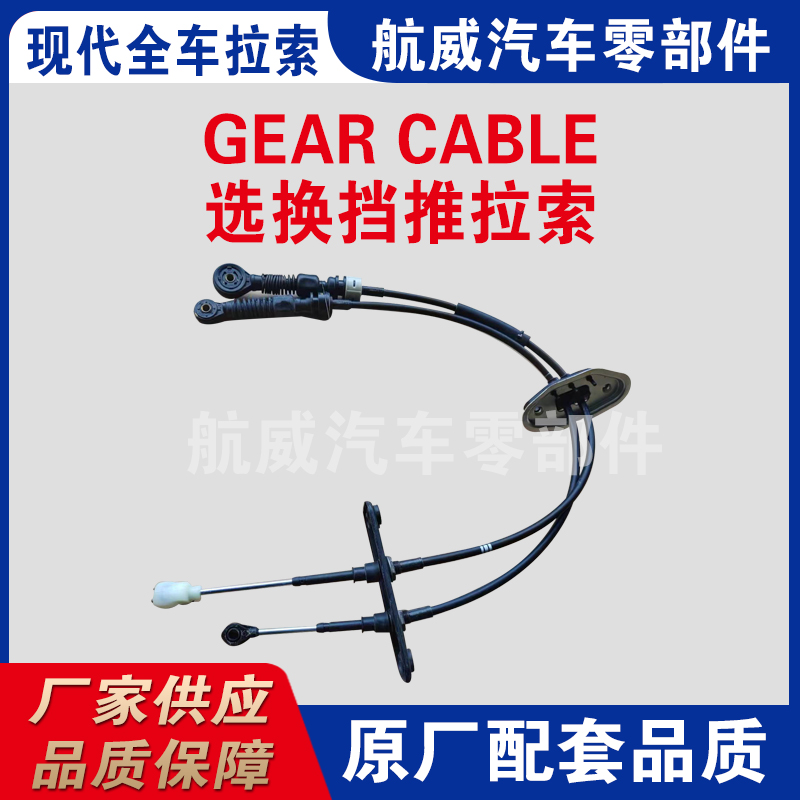carburetor throttle cable
Understanding the Carburetor Throttle Cable Function, Troubleshooting, and Maintenance
The carburetor throttle cable is an essential component in many internal combustion engines, playing a critical role in regulating the air-fuel mixture that powers the vehicle. This article aims to delve into the function of the throttle cable, explore common issues, and provide maintenance tips to ensure optimal performance.
Function of the Carburetor Throttle Cable
At its core, the carburetor throttle cable is a flexible cable that connects the accelerator pedal in the vehicle to the throttle plate within the carburetor. When a driver presses the accelerator pedal, it pulls the throttle cable, which, in turn, opens the throttle plate, allowing more air-fuel mixture to enter the engine. This action increases the engine's power output and drives the vehicle forward.
The throttle cable operates in synergy with the governor in some applications to maintain an appropriate engine speed. The smooth operation of this cable is crucial because it directly influences the vehicle's speed and responsiveness. When the throttle cable functions correctly, the driver will experience seamless acceleration without any noticeable lag or delay.
Common Issues with the Throttle Cable
Like all mechanical components, the throttle cable can encounter a variety of problems over time. Here are some common issues that vehicle owners may face
1. Cable Fraying or Damage Over time, the throttle cable may become frayed or damaged due to friction, exposure to heat, or wear and tear. This can lead to a compromised connection between the accelerator pedal and the throttle plate, causing erratic acceleration or complete loss of throttle control.
2. Sticking or Binding If the cable or its housing becomes dirty or corroded, it may bind, preventing smooth movement. A sticking throttle can result in unintended acceleration, posing a serious safety hazard.
3. Misalignment Sometimes, the throttle cable can become misaligned, causing excess slack or tightness. This misalignment can impair throttle response and may even lead to damage during operation.
4. Broken Cable In some cases, the throttle cable may snap. This dramatic failure results in an immediate loss of throttle control, which can be particularly dangerous.
Troubleshooting the Throttle Cable
To maintain vehicle safety and performance, it is essential to regularly inspect the throttle cable for signs of wear or damage
. Here is a simplified troubleshooting guidecarburetor throttle cable

- Visual Inspection Start by visually inspecting the throttle cable for any noticeable signs of fraying, damage, or rust. Look for any areas where the cable may be pinched or kinked.
- Check for Smooth Operation With the engine off, manually move the throttle plate to ensure that it opens and closes smoothly. If you encounter resistance, it may indicate binding or dirt buildup.
- Assess Cable Tension Ensure there is appropriate tension in the throttle cable, not too slack or too tight, as both can lead to a lack of control.
- Listen for Noises Unusual noises when pressing the accelerator can suggest that the cable is sticking or binding, requiring further inspection.
Maintenance Tips
Regular maintenance of the throttle cable can prevent many of the issues described above. Here are some tips to keep it functioning smoothly
1. Clean the Cable Keeping the throttle cable and its housing clean from dirt and debris can help prevent sticking. Use a suitable lubricant specifically designed for cables to reduce friction.
2. Inspect Regularly Regularly inspect the throttle cable during routine maintenance checks. Look for signs of wear and replace it at the first sign of damage.
3. Professional Servicing If you notice any problems that you cannot resolve yourself, don’t hesitate to consult a professional mechanic. They will have the tools and expertise to diagnose and fix throttle cable issues safely.
4. Installation Quality If replacing the throttle cable, ensure it is the correct type for your vehicle and is installed properly to avoid misalignment.
Conclusion
The carburetor throttle cable may seem like a small component, but its impact on vehicle performance and safety is significant. By understanding its function, recognizing common issues, and adhering to proper maintenance practices, vehicle owners can keep their throttle cables in optimal condition, ensuring smooth operation and enhanced driving experience. Regular attention to this critical component can lead to better performance, improved fuel efficiency, and, ultimately, a safer journey on the road.
-
Upgrade Your Vehicle with High-Quality Handbrake CablesNewsNov.01,2024
-
Optimize Your Bike's Performance with Quality CablesNewsNov.01,2024
-
Enhance Your Vehicle's Performance with Quality Clutch ComponentsNewsNov.01,2024
-
Elevate Your Vehicle's Performance with Quality Throttle CablesNewsNov.01,2024
-
Elevate Your Vehicle's Performance with Quality CablesNewsNov.01,2024
-
Affordable Solutions for Your Cable NeedsNewsNov.01,2024
